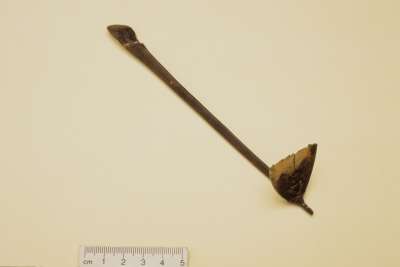Adze
Tattooing was practised throughout Polynesia. Men were tattooed more extensively than women in the Society Islands. Designs were applied with a dye made from baked candle-nuts and oil. A miniature adze was dipped in the dye and tapped into the skin with a spatula, which was also used to wipe away dye and blood during the painful process. Tattooing was performed by tahu’a, priest-like specialists. The practice was discouraged by missionaries but has recently enjoyed a revival. Gell (1993) has made an exhaustive study of Polynesian tattoo, analysing its significance as a means of ‘wrapping’ the body.
Donated by the Devon & Exeter Institution in 1872.
Donated by the Devon & Exeter Institution in 1872.
Object Summary
- Accession Loan No.
- E1760
- Collection Class
- Personal ornament
- Collection Area Region
- POLYN
- Material
- bonewood
- Common Name
- adze
- Simple Name
- adze
- Production Country
- French Polynesia (Overseas Collectivity of France)
- Production Year High
- 1872


